Introduction to Saviynt User Management
Understanding Active and Inactive Users in Saviynt
Navigating Saviynt user accounts can be a complex process. With active and inactive users present, we must find ways to differentiate them using queries within the system. Let’s dive deeper.
Saviynt offers a streamlined approach to managing user accounts.
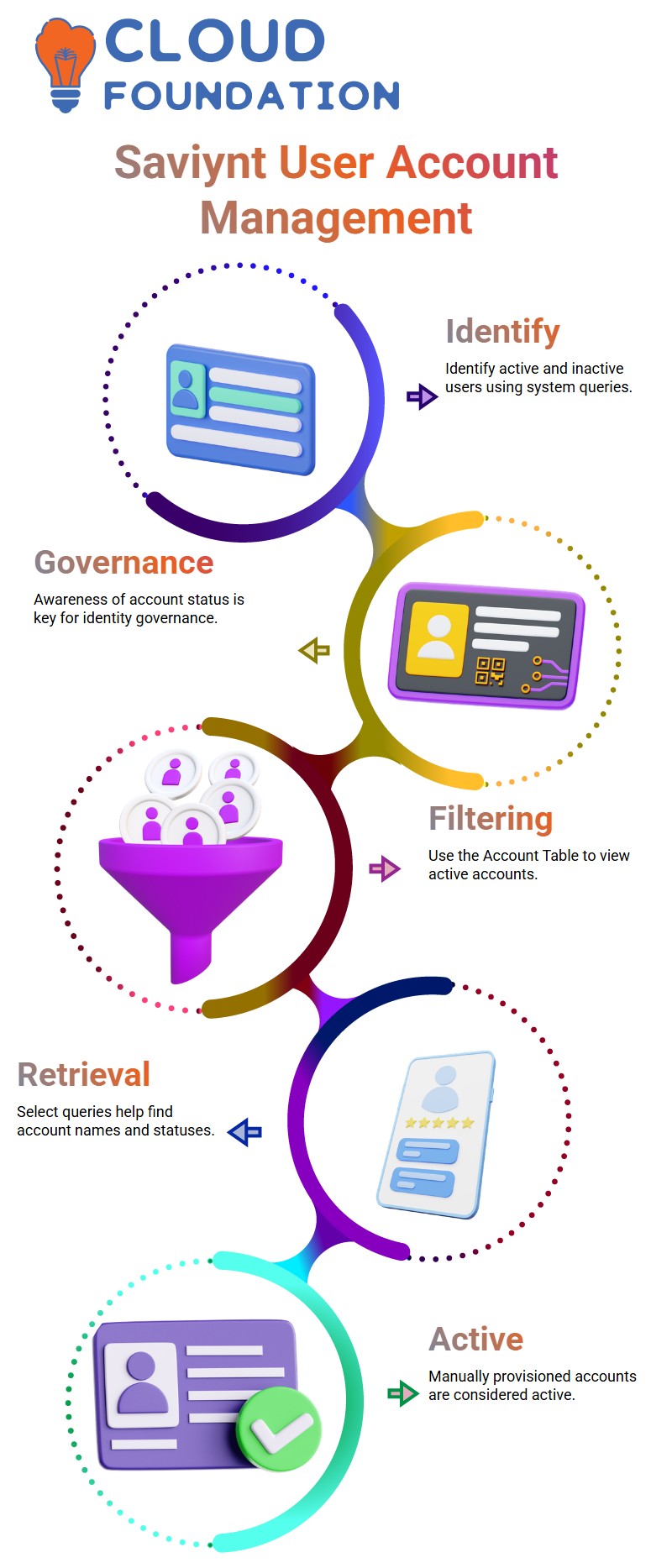
Running queries reveals information about inactive and active accounts in Saviynt; awareness of this distinction is crucial for effective identity governance within this platform.
Filtering Active Accounts in Saviynt
Refer to the Account Table to view active accounts within Saviynt. Here, we focus on columns such as Account Name and Status to aid in our search for matching accounts.
We retrieve account names and their statuses using a select query. In Saviynt, manually provisioned accounts are considered active accounts, which helps users understand which are operational.
Building Queries to Identify User Status in Saviynt
Saviynt enables us to conduct queries that differentiate between inactive users and active accounts, efficiently extracting all the required data through a single query that combines two statements.
As part of our query-building processes, Saviynt provides user and account tables.
Standardising columns between them is key, so we utilise the user account table to form this relationship.
Linking User and Account Data in Saviynt
Saviynt offers users a centralised repository for data that helps make sense. In particular, user and account keys are primary identifiers that facilitate analysis.
Utilising these keys, we create queries to retrieve inactive users with active accounts in Saviynt by linking both tables via the user account table.
Finalising the Query for Saviynt
Once our conditions are in place, we execute the final query in Saviynt to ensure inactive users with active accounts are correctly listed. Once completed, Saviynt produces an expanded dataset to validate user statuses, which is central to identity management within Saviynt.
Saviynt User Management Insights
Saviynt makes managing users straightforward. For instance, when accessing an individual user account, you can quickly determine their active status.
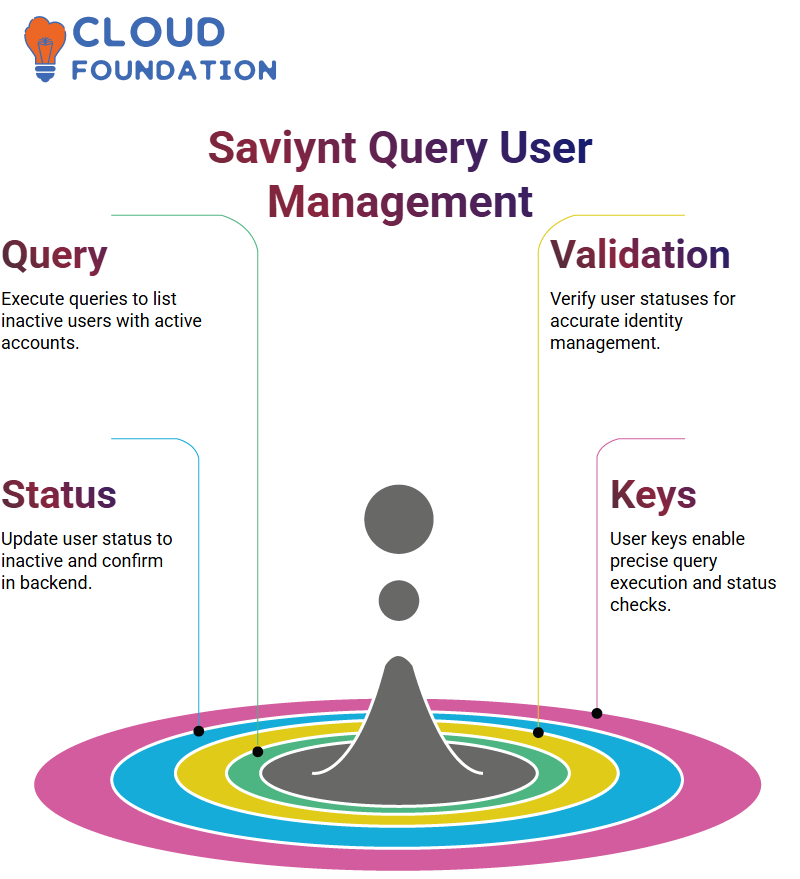
To mark an account as inactive, update its status to ‘inactive’ and verify the change in the backend. Saviynt enables accurate data validation by running specific queries. For instance, by checking keys and validating their statuses, you can easily determine their active or inactive status.
Saviynt provides every user with a user key, granting access to run queries and check statuses. When crafting queries, they must be checked for accuracy to avoid inconsistencies; once validated, these can then be utilised within Saviynt’s analytic tools to create accurate reports with pinpoint precision—one of its outstanding features.
Saviynt Analytics Menu for Reporting
Saviynt’s analytic menu is user-friendly and versatile.
Generating new analyses involves giving your report a name, pasting in a query, selecting relevant columns, and giving them their respective values. When dealing with sensitive data such as status columns, Saviynt ensures compliance by restricting specific direct inclusions while upholding integrity.
Saviynt reports can be previewed before creation, and once created, they offer filter options for visible and filterable columns.
Running reports reveals detailed data which can then be easily downloaded as CSV or Excel documents for sharing insights with stakeholders or internal tracking purposes.
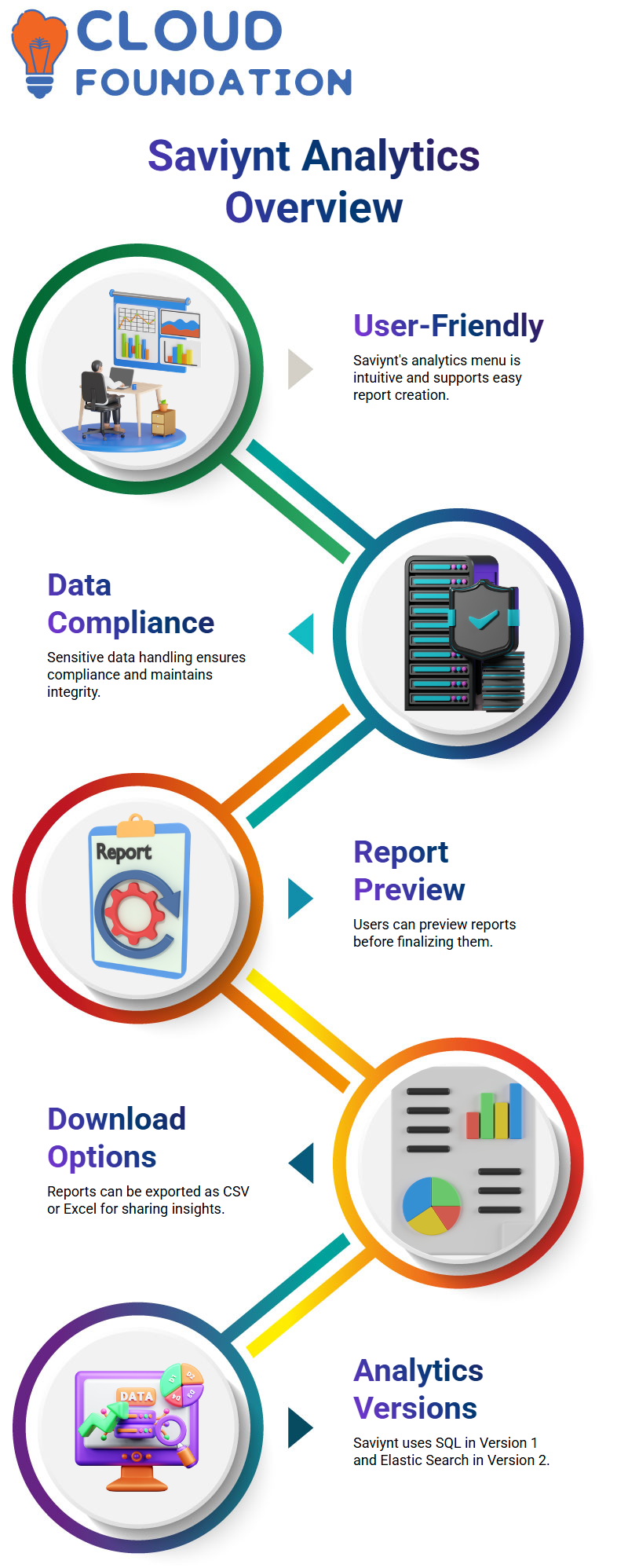
This feature makes Saviynt reports ideal for collaboration or sharing insights across teams or departments.
Saviynt Version Differences: SQL vs Elastic Search
Saviynt offers two analytics editions: Version 1 and Version 2. Version 1 utilises SQL queries for straightforward data retrieval, while Version 2 leverages Elasticsearch for advanced analytics with faster retrieval times — an essential factor when dealing with high daily data access rates.
Saviynt optimises data retrieval over creation to meet real-world scenarios, with more users accessing data than creating data daily. You can ensure quick analytics by using tools like Active Directory with Elastic Search embedded into Saviynt.
Understanding Saviynt and Its Speed
Have you been frustrated with slow data retrieval? That’s where Saviynt comes into the picture. Traditional SQL queries can take hours to process large datasets, but Saviynt revolutionises the process.
By operating on its server with optimised memory usage, searches become instantaneous, ensuring rapid access to critical information.
Saviynt and Elastic Search
Saviynt leverages Elastic Search, an effective data retrieval solution. Imagine hitting a ball by yourself; its reach will only extend so far.
With 10 people striking simultaneously, however, more ground can be covered more rapidly by hitting one ball more effectively. Similarly, Saviynt works alongside Elastic Search, which quickly retrieves information without straining your system’s resources.
Why Saviynt Boosts Performance
Saviynt’s speed is attributed to its independent memory and server setup.
Instead of using traditional database queries for searches, it uses processing power to produce instantaneous results—this optimisation makes Saviynt an indispensable solution for efficient data management.
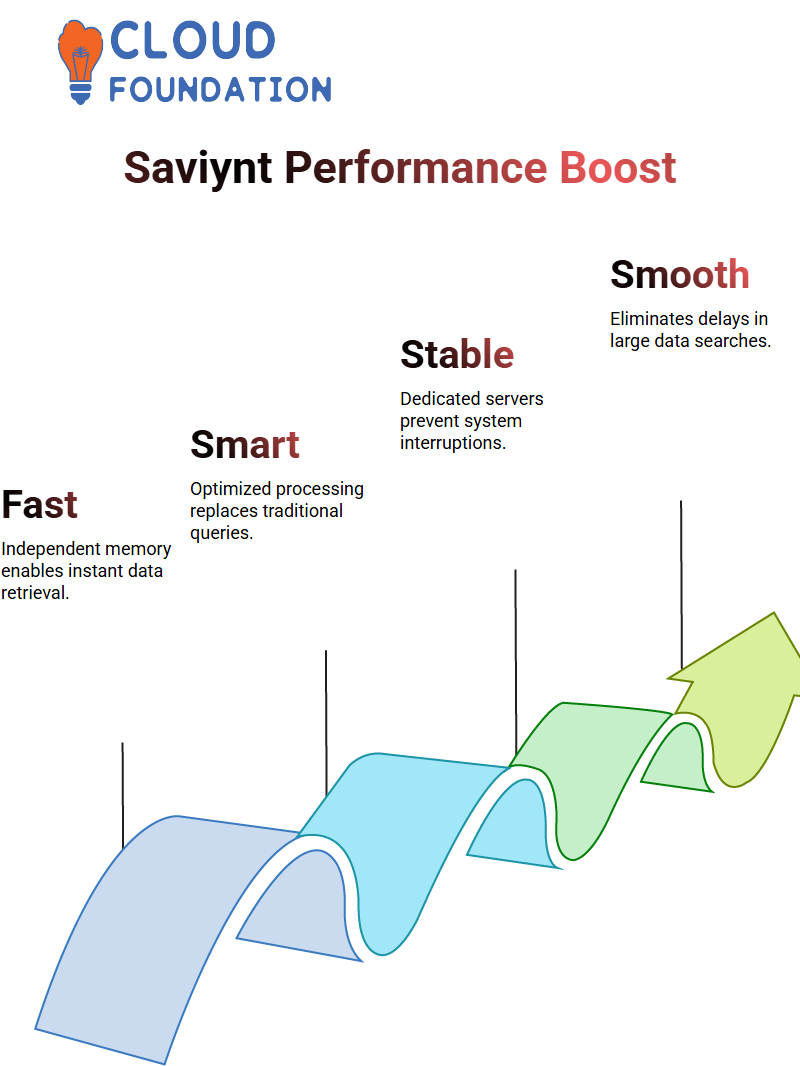
Saviynt’s Dedicated Server Advantage
Saviynt operates on its dedicated infrastructure, unlike conventional search mechanisms that rely on interruptible system operations and interfere with queries to existing system operations.
Thus, Saviynt eliminates delays and provides seamless performance when effortlessly finding thousands or millions of records.
Making Data Retrieval Effortless with Saviynt
Saviynt’s integration with Elasticsearch is transformative: it removes lag, speeds up processing, and facilitates unhindered data retrieval—essential elements that any business relying on swift access can’t overlook.

Businesses that depend on timely access to information cannot overlook Saviynt.
Understanding Technical Rules in Saviynt
Technical rules play a crucial role in identity governance when using Saviynt. These rules outline how user onboarding and provisioning occur automatically according to predefined conditions.
For instance, if a new hire in your organisation needs access to critical applications like Outlook or time tracking tools quickly without manual intervention, it may be due to Saviynt’s technical rule setup.
User Onboarding in Saviynt
As HR onboards new users, Saviynt processes their information and applies technical rules to determine access.
For example, if HR adds three new employees today, Saviynt will categorise each based on attributes such as department, location, and employment type before applying technical rules accordingly.
Saviynt utilises trusted recon, commonly referred to as authoritative sources, to facilitate seamless onboarding for its employees. This process allows employees to gain access to critical company systems via default credentials.
Automating Access Provisioning with Saviynt
Saviynt’s technical rules operate under specific conditions. When employees join as contractors instead of full-time employees, Saviynt ensures they receive different access privileges.
Once an employee type has been determined, Saviynt evaluates all technical rules to provide access according to the specific conditions and provisions applicable to that employee.
Role-Based Access in Saviynt
Saviynt’s technical rules allow role-based access control. For example, users from certain cities may gain access to database applications, while employees in another locale may gain entry to Active Directory.
At import time, Saviynt utilises background rule execution to review these conditions automatically.
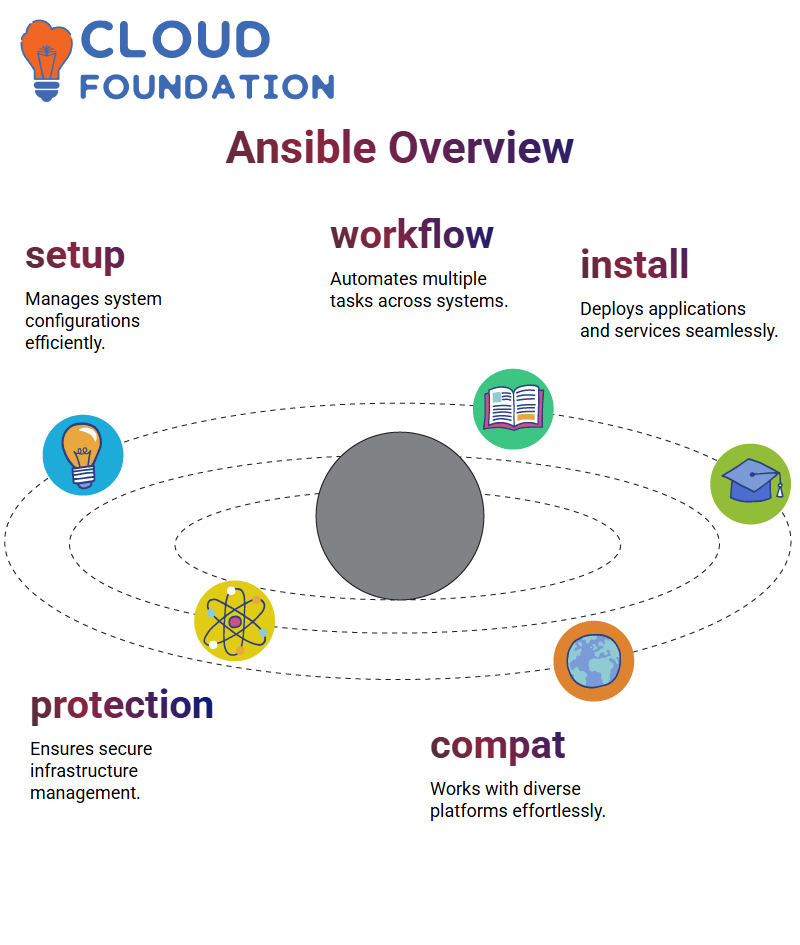 If the user meets them, their access rights will be provisioned immediately.
If the user meets them, their access rights will be provisioned immediately.
Configuring Technical Rules in Saviynt
Administrators can manage technical rules by accessing Saviynt’s policy settings. Here, predetermined conditions determine who gets access to what. For instance, if someone in City A has their account created with all pertinent entitlements.
Saviynt uses entitlement types to organise access rights into groups. For instance, HR categories could contain two entitlement types: Floor HR or People HR.
User Updates and Access Adjustments in Saviynt
Saviynt also facilitates dynamic user updates. If an employee gets married and changes their surname, Saviynt automatically updates their profile accordingly, ensuring continued access when their HR department updates their data.
These updates follow a standard technical validation process to ensure a seamless transition without requiring manual interventions.
Understanding Saviynt User Update Rules
Have you ever considered how Saviynt manages user updates seamlessly? Dwelling upon its user update rule, designed to maintain data consistency, can be eye-opening.

When user attributes change, Saviynt ensures that these changes propagate throughout its system, so updates are reflected everywhere, including email addresses and target applications.
As an administrator, you can schedule these update rules as a preventative measure against process delays.
User update rules work in tandem with an automating task known as the rule run job to maintain data consistency throughout Saviynt and provide applications with access based on updated information. Witnessing how efficiently and precisely this system performs its duties is amazing.
Saviynt Technical Rules and Their Role
When a user is created in Saviynt, technical rules take immediate effect, ensuring instant provisioning. Suppose mandatory attributes do not exist on users’ profiles.
In such cases, technical rules may fail to activate, leaving users without access to target systems. As an administrator, you must intervene quickly to resolve these situations.
Saviynt requires immediate updates from HR to ensure attributes match predefined conditions, thereby providing data integrity and access control measures to safeguard users.
If an HR system fails to update a key attribute, such as City, technical rules won’t activate, and users will be unable to gain entry.
Saviynt requires constant compliance checks from HR to keep its system synchronized, thus protecting data integrity and access control measures.
Utilising User Update Rules in Saviynt
Saviynt user update rules provide an essential bridge when technical rules fail.
They enable you to send updates, enable or disable features, and ensure users can access their target applications.
These rules are especially fascinating because they interact with technical ones for tasks like account creation and entitlement assignment.
User update rules do not directly create new accounts; instead, they modify existing information, clarifying processes while providing smooth and efficient updates. This ensures seamless updates are delivered with Saviynt processes in mind.
Managing Passwords with Saviynt
Saviynt offers an innovative password management experience. You can default users to the user import process and provide real-time settings on the Saviynt or Single Sign On (SSO) page.
As an admin, you oversee this process to ensure security and functionality for end users.End users tend to focus on accessing their target applications rather than Saviynt.
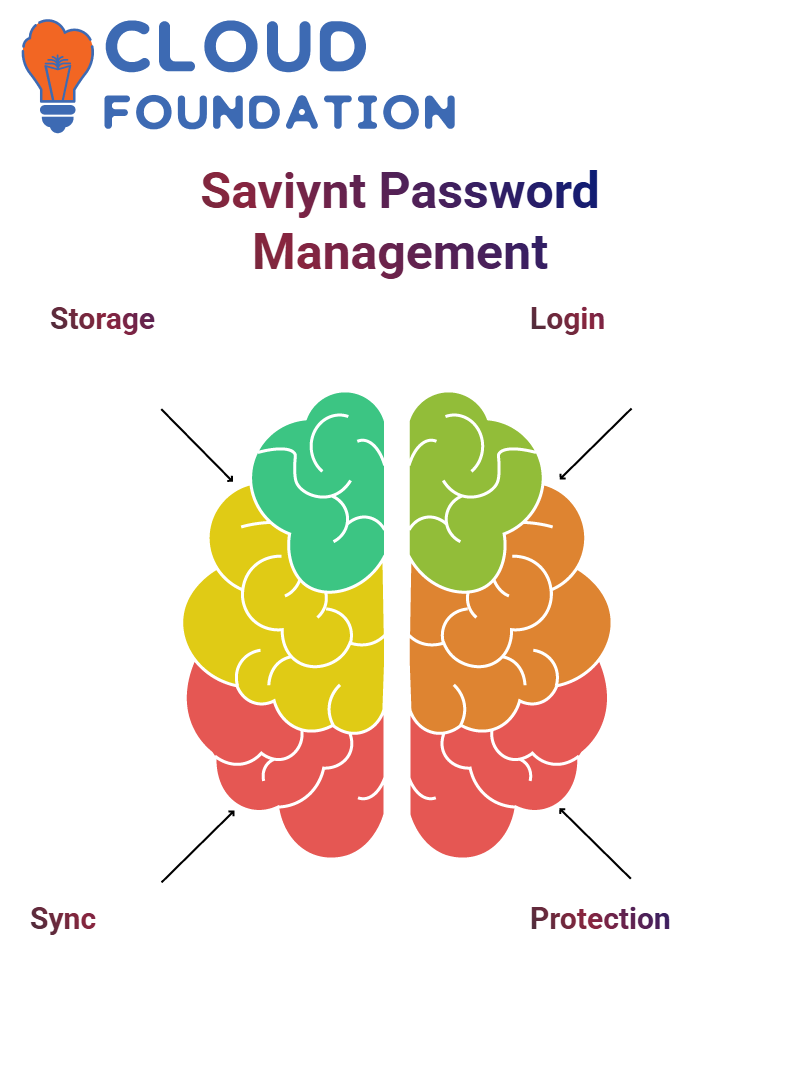 Its integration into access management and LDAP systems provides secure password storage and retrieval—an invaluable feature that underscores Saviynt’s dedication to efficiently overseeing employee and contractor lifecycles.
Its integration into access management and LDAP systems provides secure password storage and retrieval—an invaluable feature that underscores Saviynt’s dedication to efficiently overseeing employee and contractor lifecycles.
Saviynt Password Management
Saviynt makes password management simpler than ever, from password resets and updates to system synchronisation with all connected systems and accounts for every scenario, seamlessly.
That is how Saviynt ensures seamless system integrations work perfectly. When setting a new password in Saviynt, it is transmitted securely back to LDAP for updates, guaranteeing seamless updates occur within seconds.
Saviynt ensures that its password updates seamlessly integrate into existing Saviynt passwords, keeping systems synchronised within Saviynt and thereby synchronising systems.
Once you set your new password, it propagates quickly across connected systems, ensuring everything runs seamlessly. That is how Saviynt ensures that different system integrations work so well.
User Update Rule in Saviynt
Saviynt’s user update rule plays an essential role. Intended solely to update account updates—such as activating, deactivating, or changing an existing one—this rule ensures every request adheres logically and without error.
Account creation falls under another technical rule, while updates fall under the user update rule.
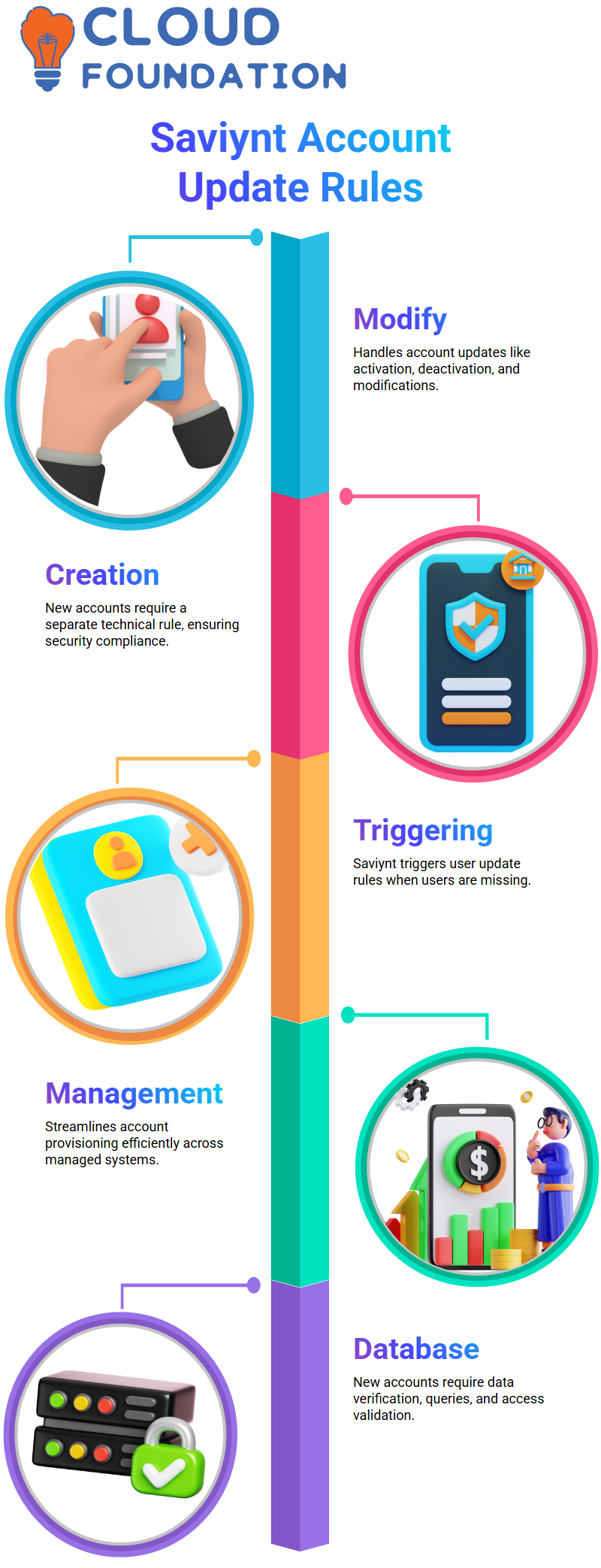
Saviynt requires creating new accounts if your current account doesn’t already exist in their database for security purposes.
Triggering Technical Rules in Saviynt
Saviynt offers a streamlined approach for activating technical rules. When users are not visible, Saviynt triggers its update user rule, first gathering technical specifications and then creating a new account rule. Creating new accounts involves accessing databases, running queries, and verifying table info.
Saviynt effortlessly streamlines provisioning while unifying account management tasks within a single interface. Provisioning can occur seamlessly for each account managed via Saviynt.
Saviynt Database Integration
Saviynt integrates seamlessly with databases. If a user lacks an account, Saviynt automatically assigns one and ensures authentication processes stay intact.
Once assigned, it verifies records before taking further action. Its powerful duplication and user management features help streamline identity and access management while assuring compliance with best practices.
Saviynt Rules and Conditions
Configuring Saviynt rules efficiently is crucial to the effective operation of Saviynt. For example, providing conditions like username verification will prevent unnecessary background checks.
Saviynt requires two conditions—first, matching a username, then updating an individual property—that must match before proceeding further with any updates or additions.
This ensures that all updates follow an efficient workflow, without redundant operations that could overload memory capacity, and adhere to a structured workflow path.
How Saviynt Executes Account Provisioning
Saviynt ensures accounts are created efficiently while safeguarding security.
When updates occur, Saviynt invokes technical rules corresponding to that update to verify conditions before initiating provisioning and assigning accounts and access rights accordingly.
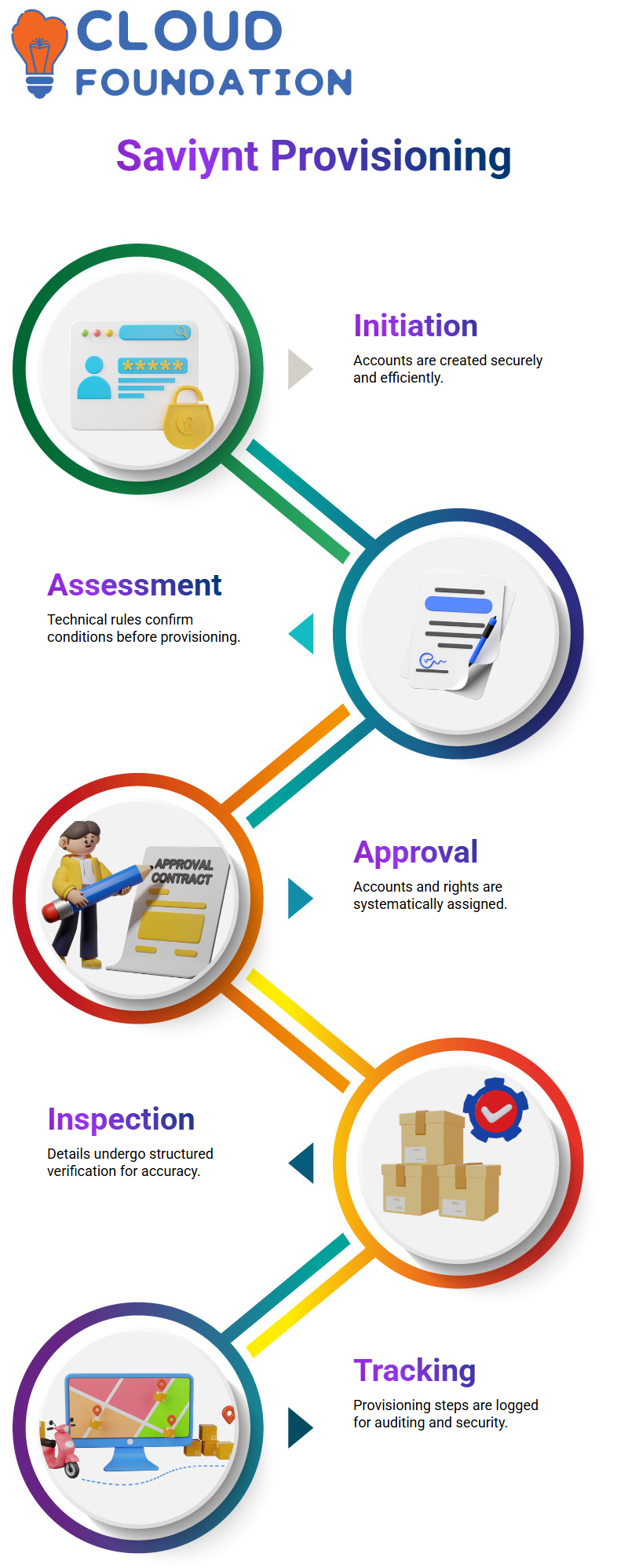
This systematic approach makes Saviynt an indispensable asset for identity and access management.
Final Steps in Saviynt Account Management
Once an account is created, Saviynt verifies it through cross-checking details and structured rule executions to ensure accurate account assignment and seamless provisioning steps logging for audit purposes. This approach makes Saviynt a reliable and secure solution for identity and access management.

Vinitha Indhukuri
Author



